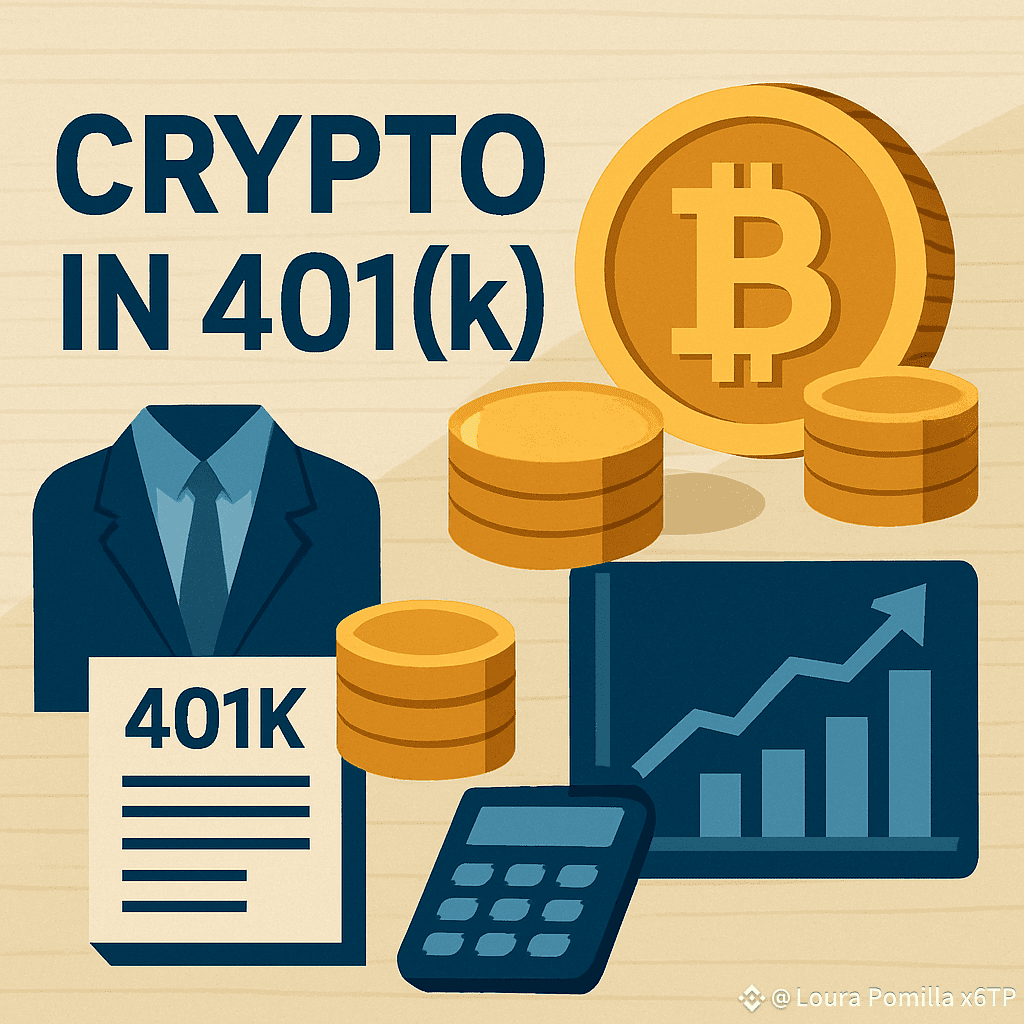As digital assets like $BTC and Ethereum continue to gain mainstream adoption, traditional financial institutions are beginning to integrate cryptocurrencies into long-standing investment tools—most notably, the 401(k) retirement plan. This new fusion of innovation and retirement security is raising eyebrows across the financial world.
🔍 What is a 401(k)?
A 401(k) is a retirement savings plan offered by employers that allows employees to invest a portion of their paycheck into a tax-advantaged account. Traditionally, this money goes into stocks, bonds, mutual funds, or ETFs.
But now, with the evolution of financial markets, cryptocurrencies are entering the picture.
🚀 Why Include Crypto in a 401(k)?
1. Diversification: Including crypto can diversify portfolios beyond traditional asset classes.
2. High Growth Potential: Cryptocurrencies have outperformed many traditional assets over the past decade.
3. Appealing to Younger Investors: Millennials and Gen Z are more likely to embrace digital assets as a long-term investment.
⚠️ Risks to Consider
While crypto offers high upside potential, it comes with significant risks:
Volatility: Crypto markets can fluctuate wildly, affecting portfolio stability.
Regulatory Uncertainty: The evolving legal landscape can impact the value and accessibility of these assets.
Security Concerns: Poor storage practices could result in loss or theft of digital assets.
🏢 Who Offers Crypto 401(k) Plans?
Major players like Fidelity Investments have begun offering crypto options in 401(k) plans. However, not all employers have adopted it, and some have opted out due to regulatory caution.
🔐 Final Thoughts
Crypto in 401(k) plans represents a revolutionary shift in retirement planning. While it may not be suitable for every investor, those with a higher risk tolerance and a long-term horizon could benefit from including a modest allocation of digital assets in their portfolio.
As always, individuals should consult with a financial advisor before making any investment decisions.

